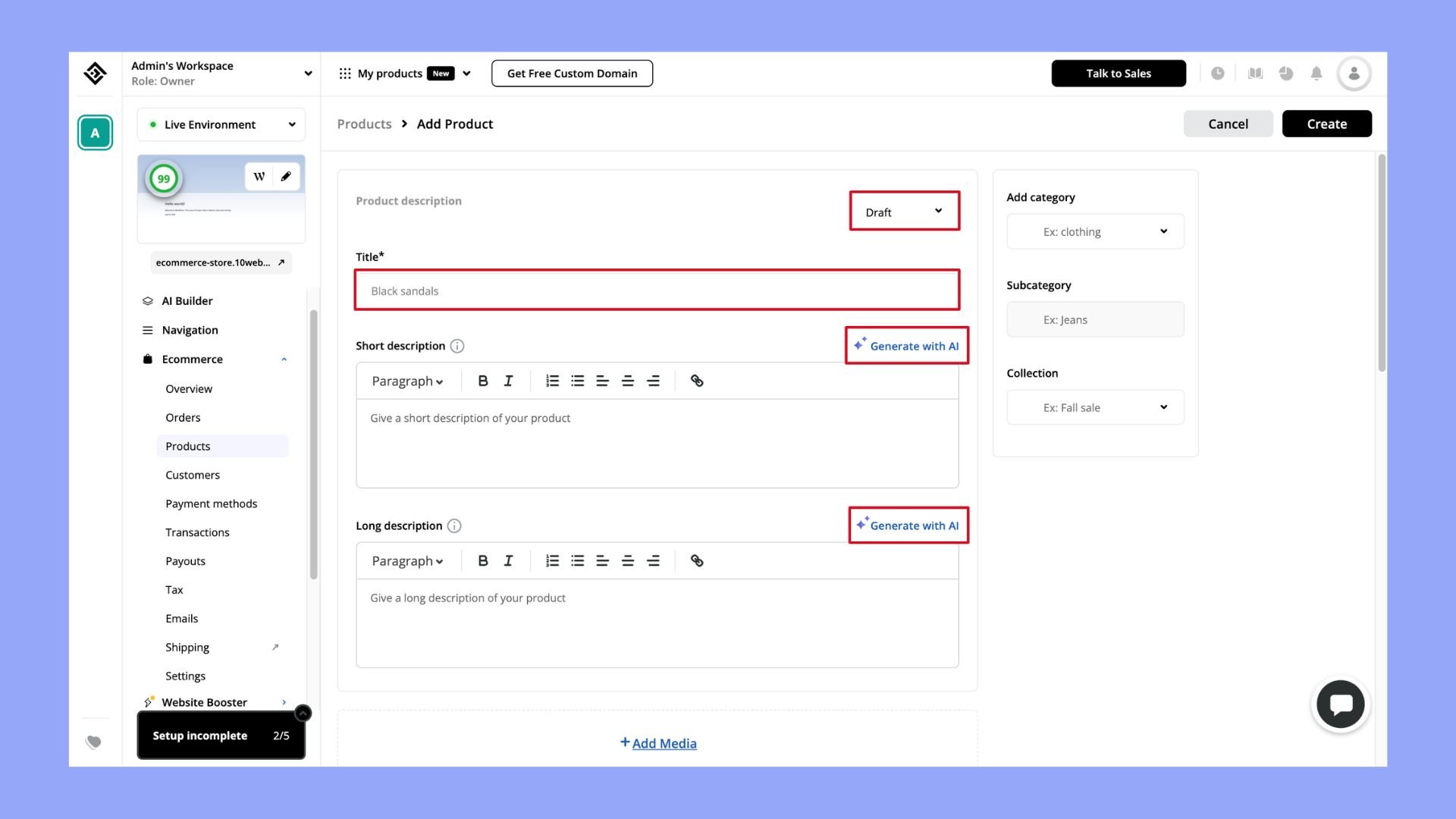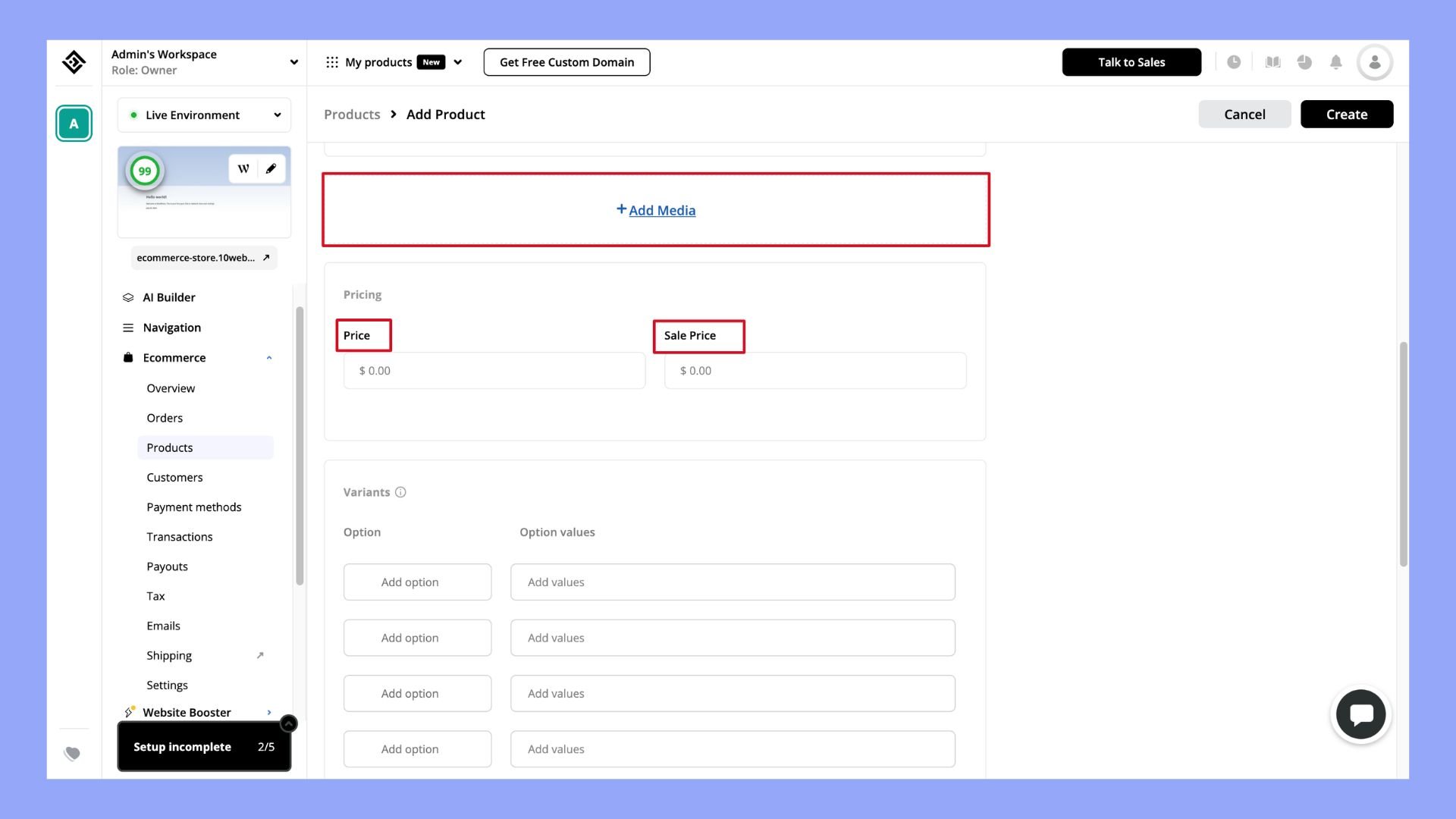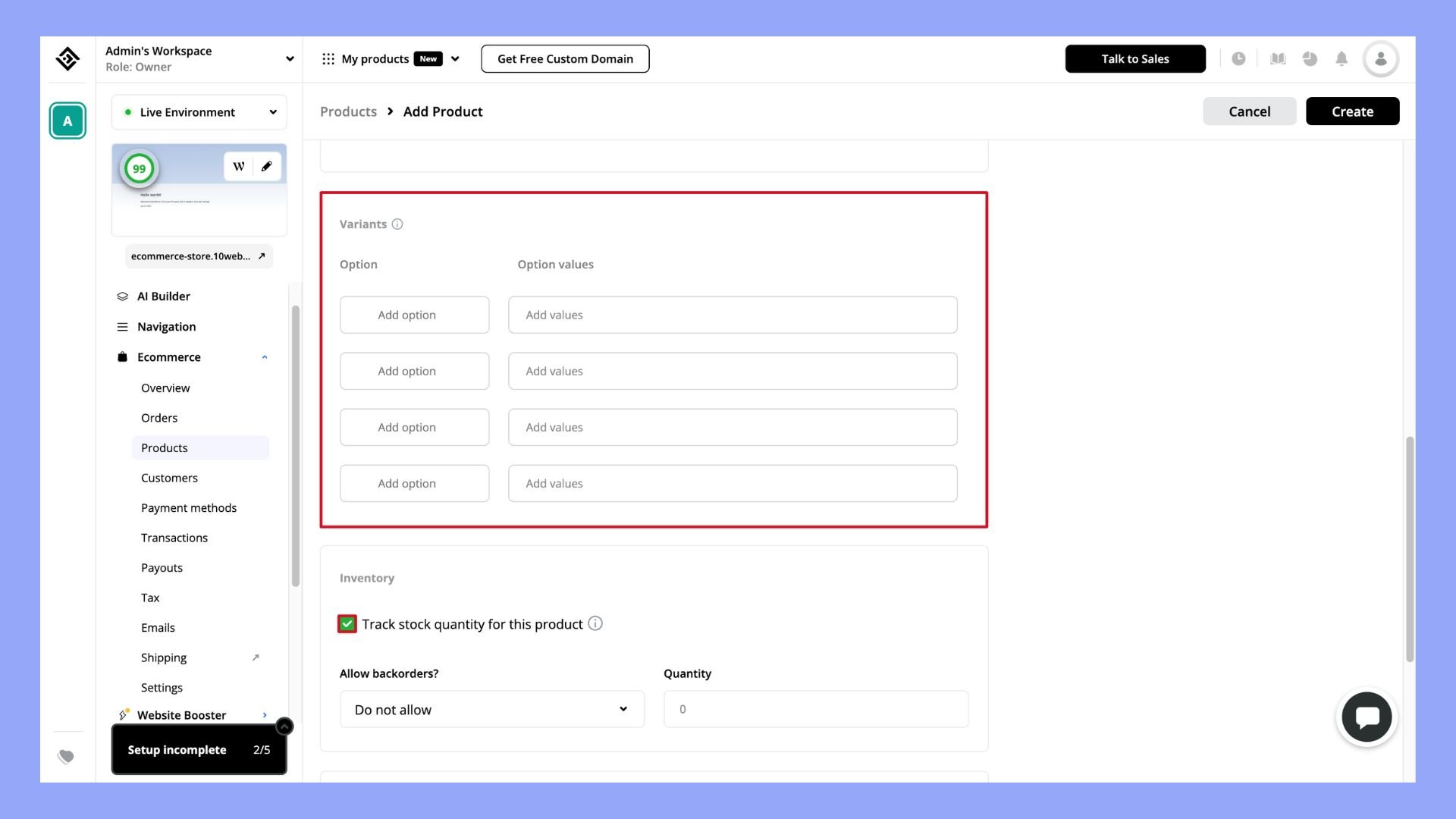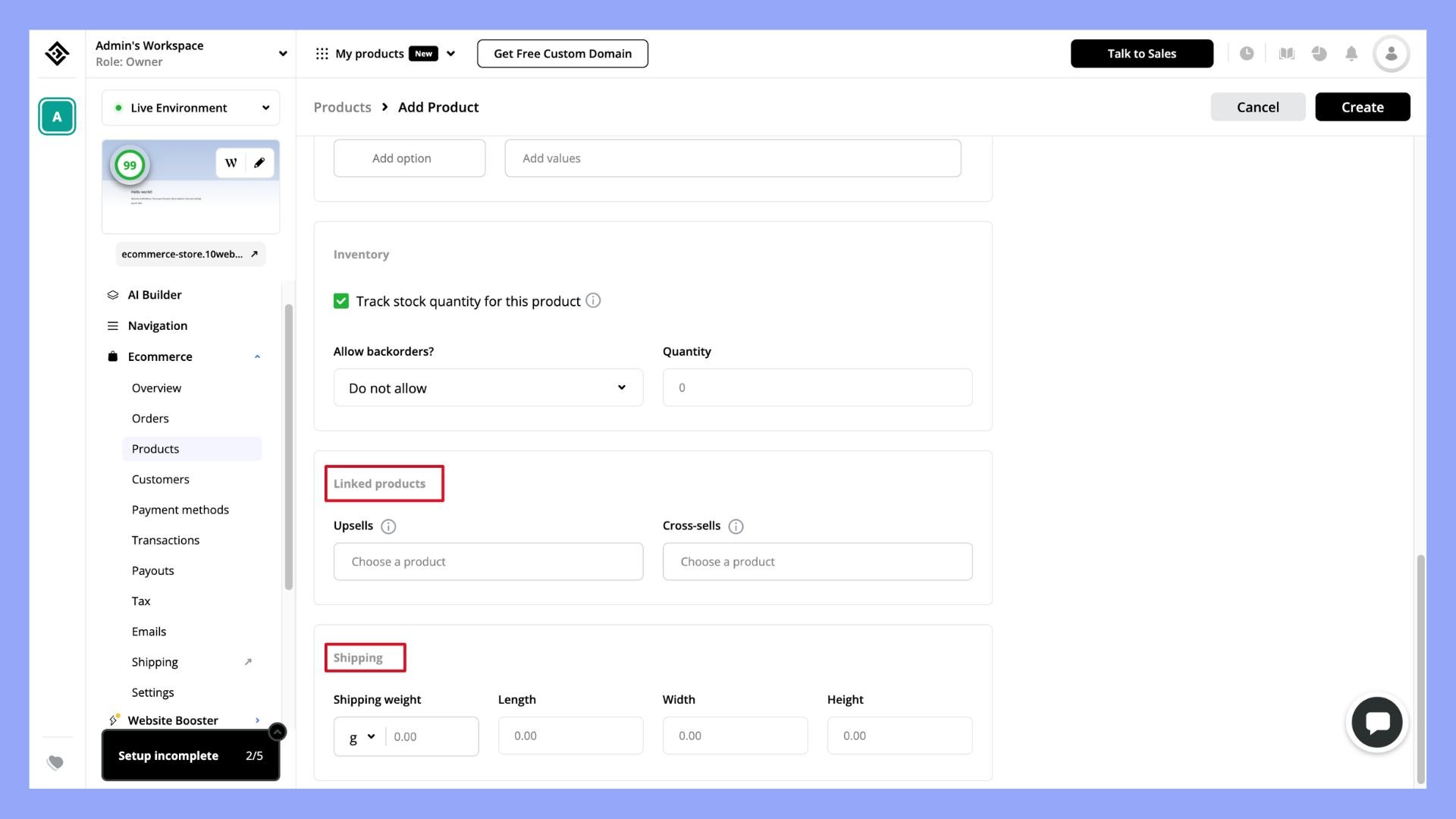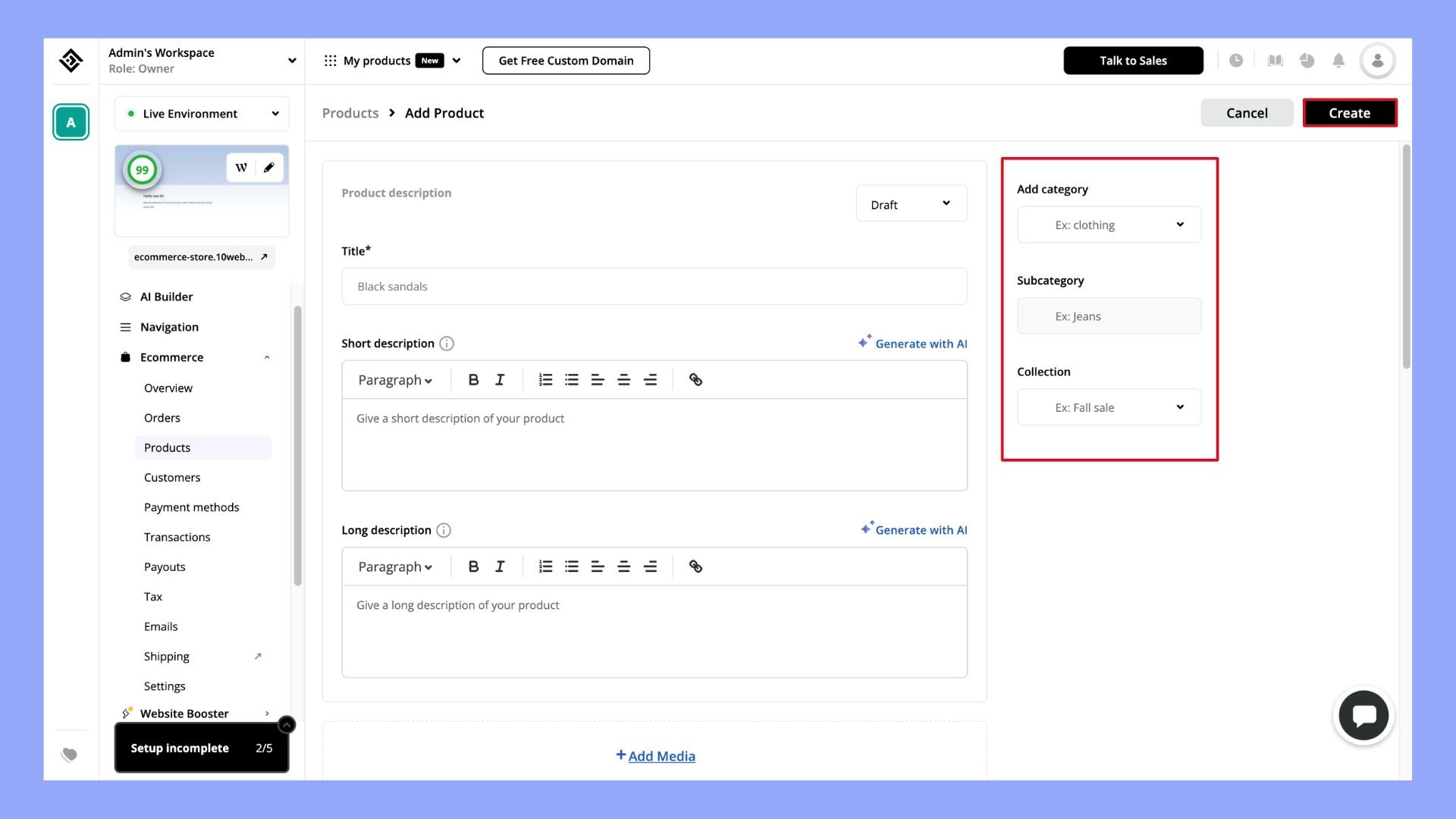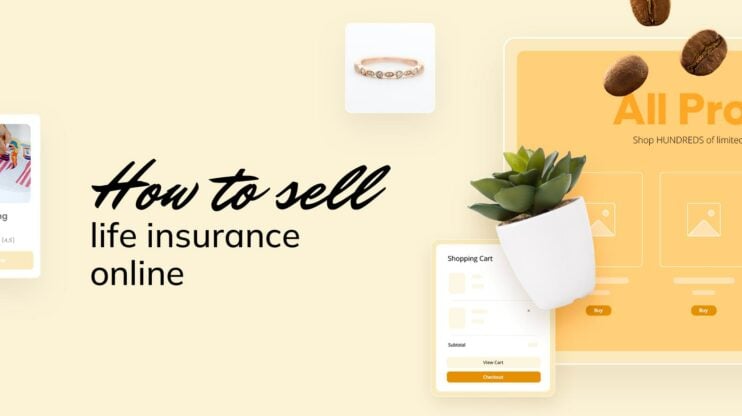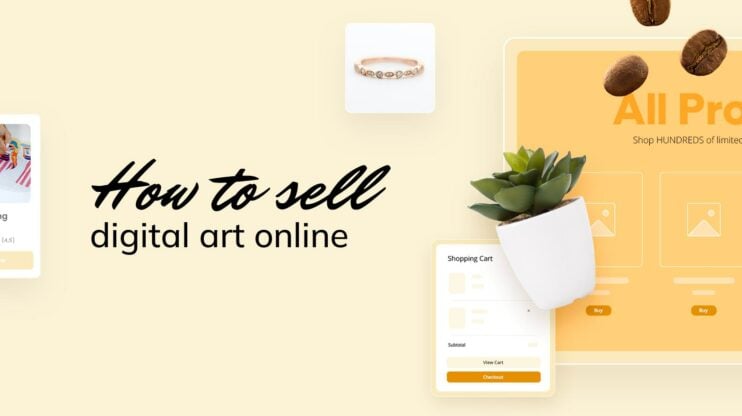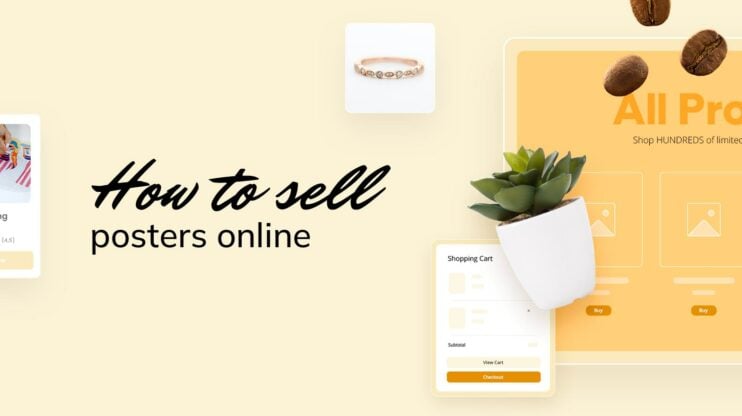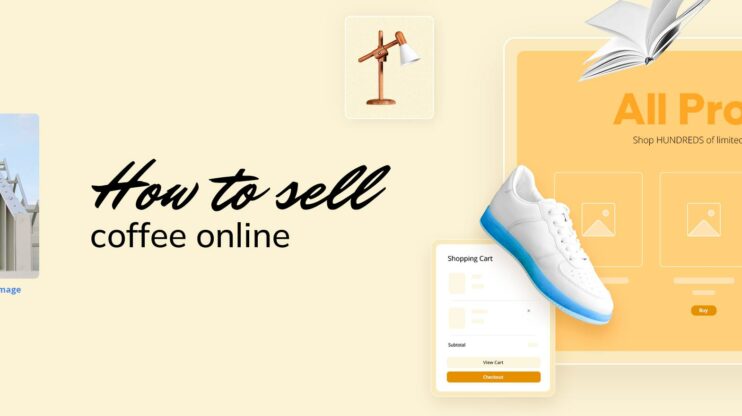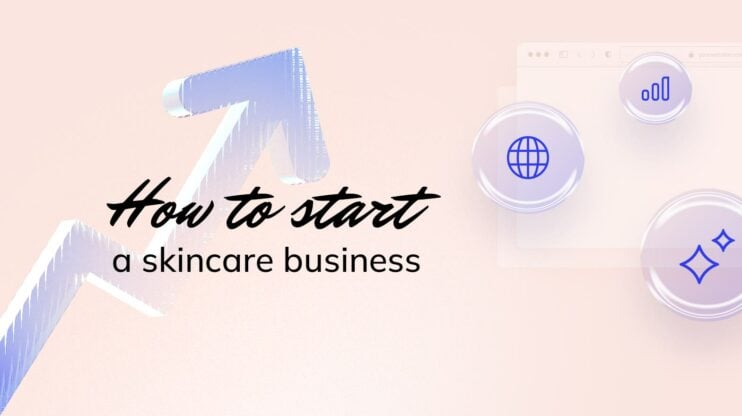The beauty and personal care industry is undoubtedly one of the biggest market segments within global ecommerce, contributing to a significant portion of total ecommerce sales.
For example, personal care, which is only a segment within the overall health and beauty ecommerce industry, has grown to $205.5 billion in 2023 with sales expected to reach almost $290 billion within the next five years.
Today, more and more shoppers are increasingly finding it convenient to purchase health and beauty products online instead of going to stores. Put simply, selling beauty products online is a massive opportunity for any entrepreneur.
So, the question arises: how to sell beauty products online?
In this blog post, we answer this very question by breaking down the entire process from start to finish for all kinds of sellers. Let’s dive in!

Looking to sell online?
Create your custom online store in minutes with 10Web AI Ecommerce Website Builder and take your business online.
Let’s understand your goal first
First of all, it’s crucial to understand the kind of seller you are, what your goals are, and how to create an online beauty store that aligns with your internal business needs. Here’s a breakdown:
Seller type 1: Beauty supply stores and boutiques that want to sell online
Both beauty supply stores and boutiques hold unique positions within the beauty and personal care industry and cater to very specific market segments.
If you’re a beauty supply store, your goal will be to provide a wide range of beauty and personal care products. On the other hand, if you’re a boutique, your goal will be to provide unique and often curated selections of beauty products (selected haircare, skincare, cosmetics, etc) for a more personalized shopping experience for the customer.
In any case, both beauty supply stores and boutiques face common challenges if they’re not currently selling online or leveraging ecommerce effectively. These include:
- Limited reach and missed sales opportunity: Without an online presence, both will miss out on reaching a broader audience. Online channels provide the opportunity to attract customers from all over the country and even globally if you decide to ship internationally.
- Customer convenience: Consumers today demand the convenience of online shopping from all the places they shop at. Without an online channel, businesses may lose customers who prefer the ease of browsing and purchasing products from the comfort of their homes.
- Reporting and analytics: Both beauty supply stores and boutiques with an existing customer base will find it difficult to manually analyze customer data to make better business decisions, launch effective marketing campaigns, create better customer experiences, etc. Selling online allows more quantifiable data to be analyzed for future insights.
Recommendation: We recommend creating a website to sell your beauty products online. This will give you complete control over the digital channel. From there, you can sell your beauty products according to your specific business needs.
Seller type 2: Independent beauty brand, product creator
Independent beauty brands and product creators usually target specific niche market segments or areas untapped by larger beauty brands. If you fall within this seller type, your goal will be to promote a very specific brand version different from beauty brands that target a mass consumer base.
If you’re not currently selling online or leveraging any online channel properly as this type of seller, you’re likely to face several challenges, which include:
- Lack of infrastructure: Most independent beauty brands and creators are small businesses or at least start out small and have limited means to run a business properly. Business operations like payroll, order and product management, accounting, and marketing are managed manually and separately which can be a hassle given limited resources. On the other hand, ecommerce platforms are from a centralized environment where all of this can be managed in one place digitally, making them perfect for this seller type.
- Marketing costs: Independent beauty brands and creators will struggle with high marketing costs with traditional advertising channels, directly affecting their profit margins. On the other hand, digital marketing costs are known to be cheap, especially on social media platforms like Instagram and TikTok, which such brands can leverage to reach a wider audience with limited budgets.
Recommendation: For independent beauty brands and product creators starting out small and working with limited resources, we recommend using online marketplaces, which is option 2 (explained in detail in the next section). Of course, you can also build your own website (option 1), which might have a learning curve and require additional effort initially but will prove more beneficial in the long term.
Seller type 3: Beauty service providers who want to integrate ecommerce into their website
Beauty service providers have very close and direct relationships with customers who often look to them for beauty or personal care advice. If you fall within this category and provide customers with a service such as makeup, hair treatment, skin care services, nail services, etc, you probably have the influence of helping customers decide what to buy.If you qualify as this seller, you may want to integrate ecommerce into your website or related existing online channels to help customers purchase products you recommend based on your experience.
Some common challenges these types of sellers will face include:
- Order placement: Without a way to easily order your recommended products online, you’re most likely to find it difficult to get customers to purchase directly from you or generally just manually process all of the incoming orders.
- Competitive disadvantage: Many competitors, such as other salons and spas, will leverage ecommerce to attract customers, offer promotions, and provide convenient booking options. If you’re not leveraging ecommerce, you will be at a competitive disadvantage in the market.
- Ineffective communication: Ecommerce platforms enable effective communication with clients through updates and promotions. Without an ecommerce platform, you may miss opportunities to communicate important information to your loyal customers.
Recommendation: We recommend option 1 (explained in detail in the next section) for beauty service providers, which is to build your own ecommerce store. This will help you stay in control of all online sales and brand identity as you recommend your customers to purchase from your online store.

Looking to sell online?
Create your custom online store in minutes with 10Web AI Ecommerce Website Builder and take your business online.
Option 1: Creating a store for selling beauty products online (for all types of sellers)
The first option is creating your online store to sell beauty products online, and can be used by all kinds of sellers as it caters to all use cases. Let’s see why this is beneficial, how to actually build out your own store from scratch, along with some tips on how to promote your store post-development.
The benefits of creating your own online shop for selling beauty products
Building your own website and taking control of your brand’s online channel is the most beneficial option for all kinds of sellers in the long run. Here are the primary advantages of building your own online shop for selling beauty products:
1. More control and customization capability
Because it’s your own site, you have complete control over your store’s functionality. This includes deciding how you want to design it, what features should be included, the kind of inventory management system you’ll build, what kind of customer experience you want, and so on.
2. Easy to scale
Unlike a traditional physical store, where scaling means adding new locations and hiring new staff, along with other overhead costs, scaling a website is much easier.
You can easily add more products, enhance your website with new features, adjust your marketing strategies, expand to new markets, and much more with very limited costs involved because everything is digital.
3. Building your customer base
Having a website to sell beauty products means you can reach a wider audience through the Internet. It also means you can build direct customer relationships. Moreover, your online beauty store will give you accurate, measurable data to study consumer behavior, sales patterns, website traffic, etc.
4. Higher profit margins and reduced long-term costs
Building your own website to sell beauty products online is more cost-effective than selling them through a traditional physical store or on an online marketplace like Amazon or eBay.
Because there are no overhead costs involved like with a physical store, the profit margins are higher. You can save on rent, utilities, and staffing while still offering a wide range of beauty products.
Also, because you’re not selling on a marketplace, you don’t have to pay any commissions or monthly service charges.
How to make an online beauty products store?
Making your online beauty store from scratch means figuring out everything from what hosting you’ll choose and what platform you’ll build your website on to how you’ll manage inventory and shipping. It might seem daunting at first, but we’ve broken the process down into a few simple steps (plus explaining how 10Web AI Ecommerce Website Builder can handle all of this for you). Here’s a step-by-step guide:
Step 1: Purchase a domain name
Start by choosing a domain name for your online beauty store. If you already have an existing physical beauty shop, aim to find a domain name with the same or a closely matching name for consistency and familiarity.
In case you don’t have a physical store and have the luxury to choose any name, choose one that fits your brand’s vision. For brainstorming ideas, you can use 10Web’s Business Name Generator to get a couple of ideas to start with.
Step 2: Choose a hosting service
Buying a hosting service is the rent you’ll pay to keep your site active on the internet. Make sure you choose a hosting service that’s secure, doesn’t cause unnecessary downtime for your website, and keeps page load time to a minimum, such as 10Web’s automated WordPress hosting.
Step 3: Choose a website builder
Next, choose a website builder to build out your online beauty store. There are many ecommerce website builders available, such as the 10Web AI Website Builder. Here’s a step-by-step guide to creating your website using 10Web:
- Go to the 10Web.io website.
- Click on the Generate Your Website button.

- Choose the option to create a website with AI.

- Pick the type of store you want to create – in this case, Online Beauty Store.

- Provide the name of your store or business and a brief description of your online art business. Add a few keywords about your website and click Enhance with AI to transform them into a compelling description.
- If you already own a domain name, select Yes when prompted. If not, select No, enter a desired domain name, and click Next.

- Enter the names of the three beauty care products you’ll be selling on your online store along with their categories, and click Generate.

- Allow the 10Web AI Website Builder to create your website, which may take a minute or two. Once ready, click the “Preview and Edit” button to view your website.
Your beauty product website will now be complete with pre-populated content and images based on the information you provided. The site will include sections such as the Homepage, About Us, Sale, and Shop, allowing visitors to explore different art categories.
Step 4: Add all of your products
10Web’s user-friendly interface makes it easy to add products to your ecommerce store. Here’s how:
- Log in to your 10Web dashboard.
- Go to the Ecommerce section in the left menu and click on Products.
- Click on Add New Product
 .
. - Decide if the product will be Active or a Draft.
- Enter product details:
- Title: Provide a title for the product.
- Descriptions: Enter both short and long descriptions. Use the Generate with AI tool to enhance these descriptions.

- Images: Upload high-quality images of the product, including multiple pictures if necessary.
- Pricing: Set the price and add a sale price if applicable.

- Variants: Add product variants to offer different options to customers.
- Stock Tracking: Enable stock tracking to manage inventory automatically.

- Linked Products and Shipping: Include linked products and shipping details.

- Category: Choose the appropriate category, sub-category, and collection from the options on the top right.
- Create Product: After filling in all the details, click Create to add the new product to your website.

Post website-building considerations
Finally, when you’ve built your site, there are certain aspects you will still need to streamline, which include:
- Writing website copy: Write engaging website copy that aligns with your brand vision. Make sure all of the pages have sufficient information to guide users. This includes writing about the terms and conditions page, contact us page, about us page, etc.
- Payment gateway integration: Make sure to integrate relevant payment gateway on your site (such as Paypal, Stripe, Google Pay, Apple Pay, etc.) so you can receive payments from customers.
- Shipping and fulfillment: Update the shipping information, such as shipping methods, shipping rates, zones, etc., so that users know all of the ways they can receive the products purchased on your site.
- Legal and compliance: Clearly outline terms and conditions, privacy policies, and return policies on your website. Also, make sure you’re in compliance with data protection regulations (such as GDPR) and other relevant laws.
Other considerations include ensuring security (such as SSL encryption), checking for mobile responsiveness, integrating customer support channels, and optimizing your site for SEO.
Step 5: Go live!
Finally, after building out your online beauty store, it’s time to go live! Remember, this is just the start of your journey to selling beauty products online.
Start marketing your new website on digital channels such as social media and search engines to direct new customers to your site. Come up with new ways to retain first-time customers and build a loyal customer base.
More importantly, make sure you put your customers first every step of the way!
4 powerful tips to promote your online beauty products store
You can’t have a brand unless people actually hear about it. This is where digital marketing comes in. To get you started, here are 4 powerful tips to start selling your beauty products online:
1. Leverage influencer marketing
You can never go wrong with influencer marketing, especially when you’re selling beauty products online. Social media influencers on platforms like TikTok and Instagram have a loyal following, where people carefully listen to recommendations and buy beauty products accordingly.
In fact, many beauty brands solely rely on allocating their entire marketing budget to social media influencer collaboration, knowing the effectiveness of this strategy, especially within the beauty niche. This strategy is highly recommended to kickstart your online selling journey.
2. Use content marketing and SEO
The next strategy is optimizing your website according to SEO best practices and using content marketing to build a better connection with potential and existing customers. People are constantly using search engines like Google and Bing to look up the best beauty products available.
By optimizing your site and publishing SEO-optimized content to show up on top search results, you can organically build stable traffic to your site over time and start saving costs incurred from paid marketing.
3. Leverage email marketing
Email marketing is the most cost-effective and powerful way to engage potential customers and bring back old ones to your online beauty store. Start with quality lead generation, then start sending out emails about beauty-related topics like skincare advice, the best lipsticks in the market, trending makeup brands, etc. You can also use emails to give exclusive discounts and giveaways to engage users towards buying from your site.
4. Showcase customer reviews
The most effective way to build trust with customers and increase conversions for your site is by showcasing reviews from past customers.
Especially for new brands, getting reviews to showcase from early customers can be a great way to promote your business. Make sure these reviews are prominently displayed on the homepage, category page, and relevant product pages.

Looking to sell online?
Create your custom online store in minutes with 10Web AI Ecommerce Website Builder and take your business online.
Option 2: Selling beauty products in online marketplaces (best for seller type 2)
The second option for selling beauty products online is leveraging online marketplaces like Amazon, eBay, and Etsy, which have built their own customer base over time. These are huge platforms where you can register as a seller and start selling to customers already on the platform without spending a lot on marketing.
Advantages and disadvantages of selling beauty products on online marketplaces
Like any business strategy, there are pros and cons to selling beauty products on online marketplaces. These include:
Advantages
- Lower marketing costs: Selling on online marketplaces means lower marketing costs because you don’t need to advertise your brand on social media platforms or search engines.
- Leverage existing traffic: Online marketplaces like Amazon and eBay have existing traffic searching for beauty products on their platform. By optimizing your beauty products to show up for top search results on these platforms, you can start getting instant orders.
- Ease of use: Online marketplaces have built-in dashboards for sellers where they can manage everything in one place. These are easy-to-use platforms where you can easily manage built-in features for product and inventory management, payment processing, reporting, analytics, etc.
- Customer trust: If you’re selling beauty products on your own website, it will take time for customers to start trusting your brand. With online marketplaces, there’s a built-in customer trust because online marketplaces take responsibility if something goes wrong with the order.
Disadvantages
- Platform Fees: Online marketplaces charge a fee for using their platform. Typical fee types include fees charged for each order, listing fees, and a seller subscription fee. For small beauty brands starting out, the fees might make sense in return for initial orders. But as you scale, such fees will start to eat away at your profit margins and become a hindrance to future growth.
- Limited branding: While you might get sales from online marketplaces because of built-in traffic, remember that these are not your customers. Because of branding limitations, remember that these customers will disappear when you stop using the platform. This can be an issue for long-term growth.
- Policy restrictions: Every online marketplace has its own specific policies, which each seller must abide by. The minute there’s an issue and a policy is violated, you’re at risk of losing your seller account.
- Seller competition: Online marketplaces benefit from more sellers using the platform so prices remain competitive. While this might benefit the customers, you’ll be constantly engaging in pricing wars to stay competitive on these platforms and will have to stay prepared for lower profit margins.
4 best places to sell your beauty products online
Given the popularity of the beauty niche, there are a number of popular online marketplaces with an existing customer base where you can sell your beauty products. The most popular ones include:
1. Amazon
Amazon has one of the largest customer bases out of all the online marketplaces on this list. It’s also the most popular platform for sellers looking to sell their beauty products online.
The platform offers a vast selection of skincare, haircare, makeup, and other beauty items. Its extensive product range, competitive prices, and user reviews, coupled with its reliable delivery service, make it perhaps the best marketplace on this list.
2. eBay
A well-known and trusted brand all around the world, eBay offers a diverse range of skincare, makeup, and hair care products, both new and used, at competitive prices. For sellers, the platform’s auction-style format and the ability to buy from individual sellers make its appeal unique compared to other marketplaces. Sellers have more control, with the ability to set their own prices and set terms with the buyer.
3. Poshmark
Although operating as a niche marketplace for beauty products, Poshmark has established itself as a leading marketplace competing with giants such as Amazon and eBay. The platform has a simple premise for sellers: take a couple of pictures of the products you want to sell and take your listing live. Once the orders start coming in, Poshmark will take care of everything from shipping to payment processing. The platform’s social and community-focused features contribute to its popularity, allowing sellers to engage with buyers and create a personalized shopping experience.
4. Mercari
Mercari is another popular marketplace for selling beauty products online. The platform allows users to list and sell a wide range of items, including new or slightly used beauty and skincare products.
Mercari’s user-friendly interface and straightforward selling process contribute to its popularity. Sellers can easily upload pictures, set prices, and manage transactions through the app.
4 tips to successfully sell beauty products on an online marketplace
Once your seller profile is made, you still need to compete against other sellers to be successful on online marketplaces. Here are a couple of tips to help you out:
1. Optimize product descriptions
On online marketplaces, the customer has a wide range of options to choose from when buying any beauty product. The best way to stand out is to make sure your product copy is written well, and you have high-quality pictures against each product listing. A good product description will help you stand out in competitive online marketplaces.
2. Optimize for the platform’s search engine
Online marketplaces will help you understand the kind of products people are searching for on their platform. In addition, you can also use SEO tools to see what people are searching for on search engines like Google.
Create a list of these keywords to optimize your product’s name and description to optimize for these keywords. This will help you show up for the right search and user intent to have more visibility on online marketplaces.
3. Focus on customer reviews and ratings
Focus on getting people to leave reviews and high ratings for your seller profile. This will help build trust with customers. It’ll also help indicate to the online marketplace that you’re a trusted seller and prioritize you on organic search results.
4. Offer competitive pricing
Competitors are changing prices on online marketplaces all the time to make sure they offer customers the best deal, even if it’s lowering a product’s price by a few cents. Make sure the pricing for each product you’ve listed stays competitive. You can use automation tools like Repricer to keep your inventory prices updated in real-time.
Conclusion
Start your journey to selling beauty online by assessing what kind of seller you are and the approach you need.
- For beauty supply stores, boutiques, or service providers: Creating a personal website is the best way forward.
- For independent beauty brands or product creators: Begin with online marketplaces and eventually build your own website.
Building your own ecommerce website is always a smart decision, but the hassle often deters people. With 10Web’s AI Ecommerce Website Builder, anyone can create a store in minutes and manage everything with advanced AI features. If this sounds too good to be true, check it out here.







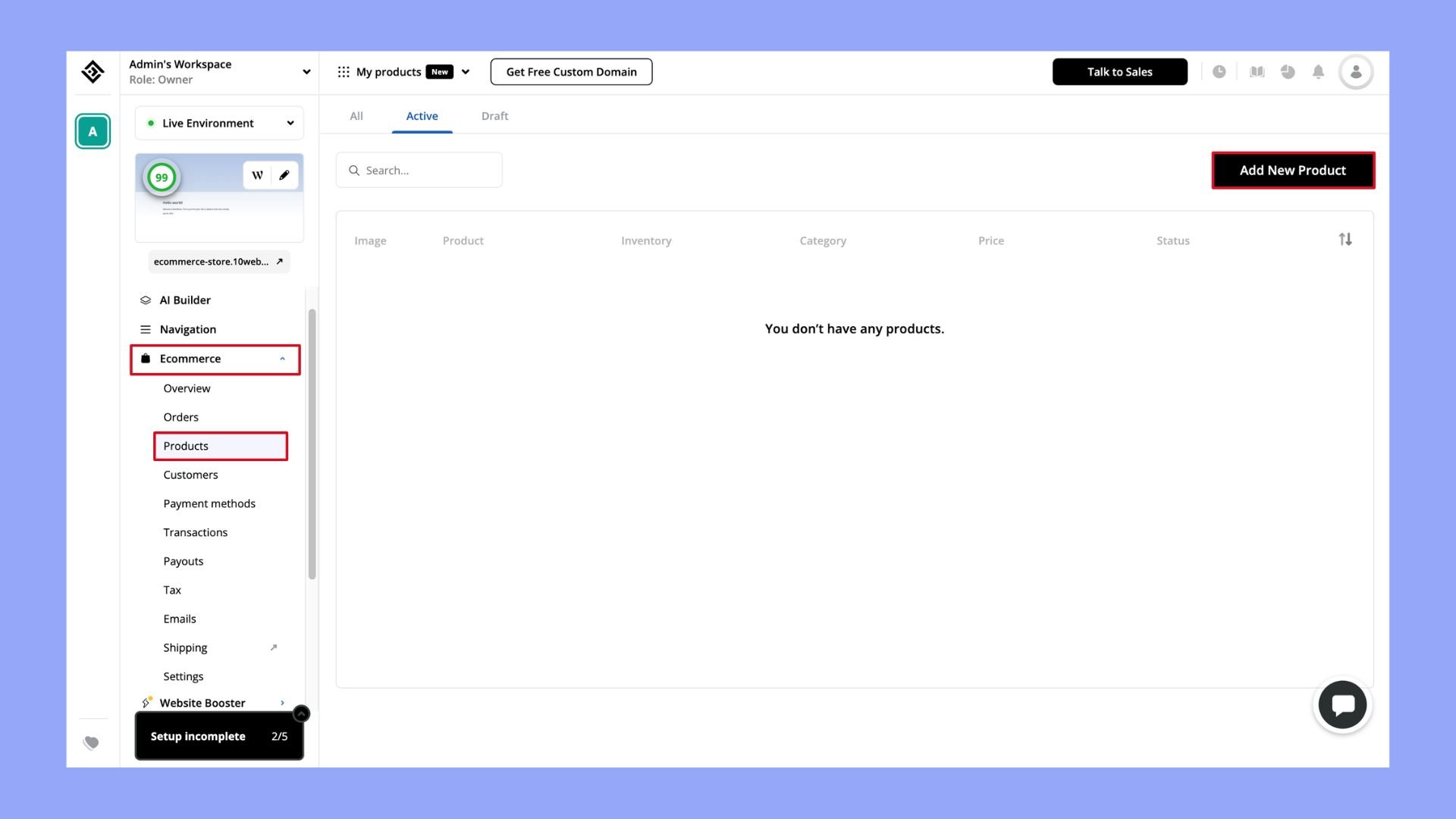 .
.